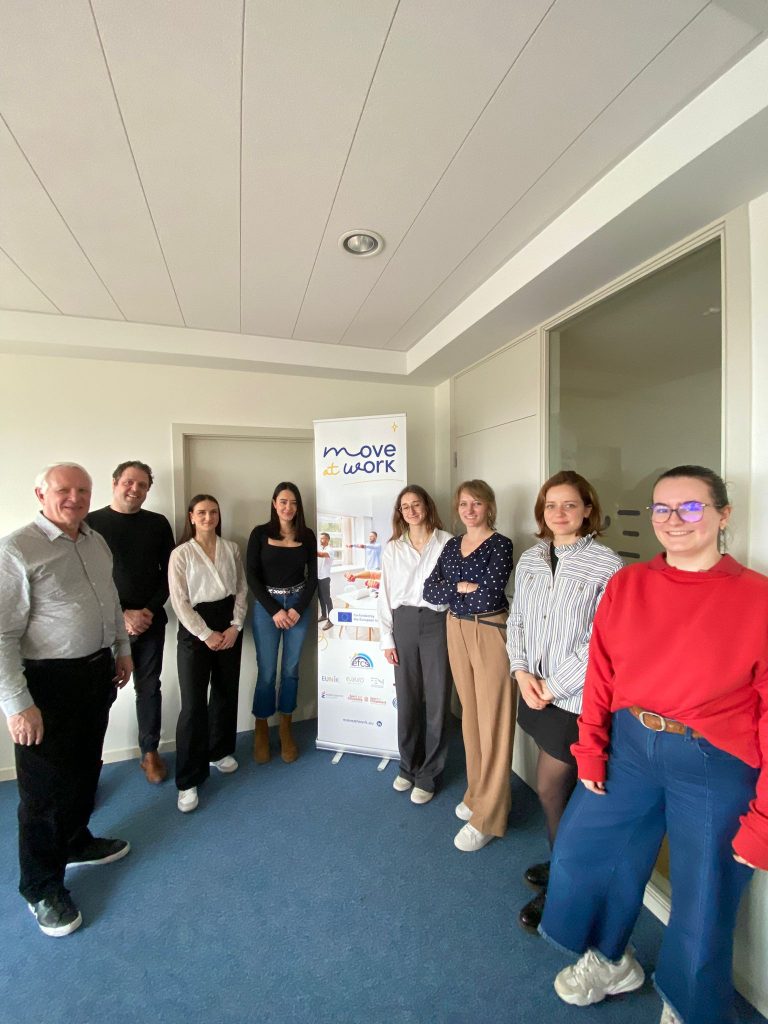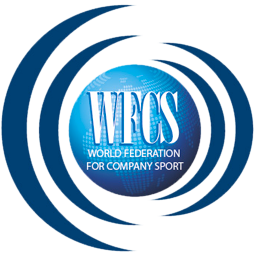Support the Move At Work Pledge
Uniting for healthier, more sustainable and high-performing workplaces through physical activity and sport
Background
The Move At Work project is co-funded by the European Union’s Erasmus+ programme and led by the European Federation for Company Sport (EFCS), uniting partners across Europe to promote workplaces where physical activity and sport drive both human and organisational performance.
The Move At Work consortium invites individuals and organisations — companies, institutions, associations, and decision-makers — who believe in the benefits of integrating movement into daily work life to join the Move At Work Supporters’ Pledge.
We call on everyone to recognise that physical activity is not just a benefit, but a vital component of modern workplaces. It boosts employee wellbeing, strengthens productivity, supports long-term health, and should naturally be integrated into the daily rhythm of where we spend most of our lives — the workplace.
Why support the pledge
Physical activity doesn’t mean running marathons or compulsory gym sessions. It includes walking meetings, stretch breaks, active commutes, and creating an environment that encourages regular movement throughout the workday.
The need for action is urgent.
€
Billion
Physical inactivity costs European economies over €80 billion annually through lost productivity, healthcare expenses, and early retirement
Nearly
%
Nearly 45% of Europeans never exercise, despite the recommendation of 150 minutes of moderate activity per week (Special Eurobarometer 525, 2022).

Organization’s benefits
%
replacing an employee can cost up to 200% of their salary. (Society for Human Resource Management Statista, 2023)
€
the average yearly cost of absenteeism per employee. Society for Human (Resource Management – Statista, 2023)
%
reduction in long-term sick leave thanks to simple two-minute breaks. (Andersen, L.L. et. Al. Potential of micro-exercise to prevent long-term sickness absence in the general working population?, 2022)
%
less sick leave in workplaces that promote physical activity.
€
%
lower stress levels among employees in active workplaces. (Harmonie Mutuelle/AOS, 2023)
%
higher productivity for physically active employees. (International Journal of Workplace Health Management – Havard business review – Forbes, 2017
While 100% of business leaders who have already implemented physical and sporting activities in their companies recommend them to their peers (Generali, OpinionWay, 2018), only 11% of EU citizens engage in sport or physical activity as part of their work (Special Eurobarometer No 525, 2022).
Move at Work
Our shared principles
Organisations who endorse this pledge agree that:
- Movement is essential for health, wellbeing, and workplace engagement.
- Every workplace can contribute, no matter the size, budget, or sector.
- Inclusivity matters — all employees, regardless of ability, background, or job role, should have access to physical activity.
- Culture change is key — from active meetings to encouraging regular movement breaks, normalising physical activity makes a difference.
- Small actions can make a big difference — promoting flexible, low-cost solutions.
- Leadership matters — when managers and executives participate, others follow.
- Collaboration drives progress — sharing knowledge, challenges, and innovations across sectors around moving in work environment.
- Evidence-based approaches are essential — policies should be guided by scientific research and impact evaluation and the development of recognised frameworks such as the Workplace Active Certification (WAC).
- Digital tools enhance engagement — integrating platforms such as e-learning, guidebooks and activity-tracking apps helps make physical activity initiatives more accessible, scalable, and adaptable to diverse work environments.
- Long-term impact matters — workplace physical activity strategies should prioritize sustainable, ongoing efforts over one-off actions. Building lasting change requires the active involvement and engagement of all employees in shaping a shared approach.

Move at Work
Join us !
Together, we are building a movement for movement — where active workplaces are the norm, not the exception.
By signing the pledge:
- Promote and foster active workplaces
- Highlight and share your commitment
- Connect with the community and events updates (networking, Company Sport Games, conferences..)
- Discover the Active Workplace Certification (WAC).
- Receive useful materials: Guidebook and Infographic.
- Engage with Move At Work free online course with
our e-learning platform .
Support the Move At Work Pledge
Move At Work Supporters
Funded by the European Union. Views and opinions expressed are however those of the author(s) only and do not necessarily reflect those of the European Union or the European Education and Culture Executive Agency (EACEA). Neither the European Union nor EACEA can be held responsible for them.







